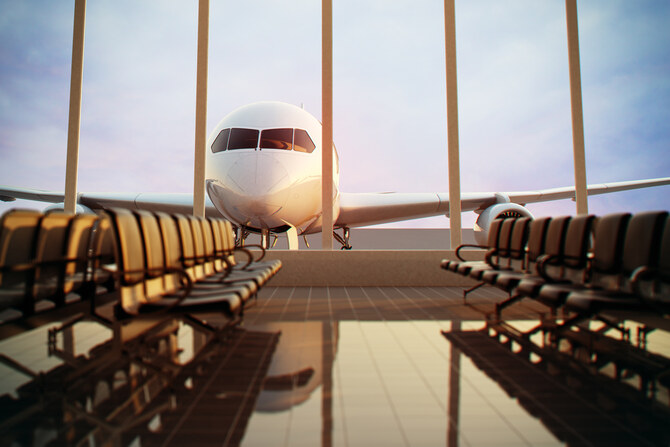Mabrian’s analysis of 2025 international air seat availability reveals key shifts in the Middle East’s aviation landscape, underscoring the need for strategic route development, airline partnerships, and network optimization to strengthen the Middle East’s position as a global aviation hub.
Mabrian, the global travel intelligence platform, analyzed seats availability data on flights scheduled in international, one-way, direct flights connecting to nine Middle East destinations (Türkiye, Egypt, Jordan, United Arab Emirates – UAE, Saudi Arabia, Qatar, Oman, Kuwait, and Bahrain), that collectively account for 12 percent of the total global inbound air seats scheduled for the full year 2025. This study is part of a series of Middle East market insights Mabrian will release in the lead-up to Arabian Travel Market 2025, aiming at sparking discussions on key trends shaping the travel & tourism in the region.
Key take outs of this study indicate that the United Arab Emirates and Türkiye maintain their positions as top global connectivity hubs; Saudi Arabia emerges as a fast-growing competitor; Qatar stabilizes after sustained expansion; Egypt and Jordan are set to outpace global growth rates, and Oman, Bahrain, and Kuwait face declining inbound connectivity.
Saudi Air Connectivity Soars: A +38 percent Growth in Inbound Seats Since 2019
The United Arab Emirates (ranking in 7th position worldwide with 88.9 million seats available on international flights) and Türkiye (9th position, with 75.6 million seats) are among the top 10 countries with the strongest international air connectivity worldwide in 2025, based on scheduled air seats. This solidifies their status as key connectivity hubs for the region.
When considering the forecast for the next six months compared to the same period in 2024, the year-over-year growth in international air seats for both the UAE (+6.1 percent) and Türkiye (+6.3 percent) is close to the global average (+6.5 percent). However, the full-year increase in inbound seats for 2025 in the UAE (+3.4 percent) and Türkiye (+4.2 percent) is expected to be slightly lower than the global average (+6 percent).
“Undoubtedly, the UAE and Türkiye have solidified their positions as international hubs for the Middle East—not only due to their strategic geographic locations but also as a result of smart route development strategies. These include leveraging stopovers and enhancing holiday itineraries, as well as the strength of their flagship airlines,” explains Carlos Cendra, Partner and Director of Marketing and Communications at Mabrian. “The next step is to take a quantum leap in tourism product development, as many of them are already doing, to capture and retain a greater share of these travelers in their own destinations.”
Saudi Arabia deserves special attention. In addition to being the third-best connected country in the Middle East and ranking among the top 20 worldwide in terms of international air connectivity, Saudi Arabia is expected to grow by +8 percent over the next six months and by +5.2 percent throughout 2025, reaching a total of 43.1 million international air seats by the end of the year.
Saudi Arabia is the country that has experienced the second-highest growth in international air connectivity since 2019 (+38 percent), following Egypt (+51 percent). “Even though Saudi Arabia’s international seat capacity is about half that of the UAE, the region’s main connectivity hub, this growth highlights the country’s potential to establish a strong connectivity triangle with the UAE and Qatar,” states a Mabrian expert.
Two other key travel destinations also stand out due to their projected increase in inbound air seats for both the upcoming semester and the full year 2025: Jordan and Egypt. Jordan is set to double the global growth rate, achieving a +13 percent year-round increase in inbound air seats (equivalent to 6.5 million). This expansion aims to restore foreign demand in 2025, following a -6.4 percent decline in international air connectivity in 2024 compared to 2019. Egypt is expected to boost international connectivity by increasing air seat capacity by +11.4 percent over the next six months and by +8.1 percent throughout 2025, reaching 28 million inbound seats and further strengthening its position as a leading international destination in the Middle East.
Other GCC countries exhibit a different trend in projected international air connectivity for 2025. While Oman, Bahrain, and Kuwait are set to reduce total inbound seat capacity by -3.1 percent, -3.9 percent, and -4.4 percent respectively, Qatar—the fourth-best connected country in the Middle East and ranked 25th globally—shows signs of stabilization after achieving a +14 percent increase in inbound air seats since 2019.
Growth Trajectories and Strategic Shifts for 2025
Mabrian’s travel intelligence also provides valuable insights into how air connectivity has evolved over the past five years across the nine Middle Eastern countries analysed, based on consolidated international seat availability data from 2019 to 2024. The data highlights both opportunities and challenges that need to be addressed in the coming years, including route development, airline partnerships, and the expansion of global connectivity networks.
Oman, which has seen a -19.6 percent reduction in international air seats since 2019, has different choices to enhance its inbound connectivity strategy. Strengthening its approach to retaining travel demand—particularly from long-haul source markets—could be key to reversing this downward trend. A similar strategy could also benefit Bahrain, which has recorded a +2.3 percent growth in inbound air seats over the same period.
At a more advanced stage of connectivity development in the region, Qatar (+13.6 percent growth since 2019) and the UAE (+14.5 percent) are projected to reach 32 million and 88.9 million international seats, respectively, in 2025. This sustained growth presents significant opportunities to increase international visitation and enhance routes to underserved destinations.
Finally, with its well-established position as a major travel destination, Türkiye has leveraged connectivity to drive tourism growth, achieving a +25 percent increase in inbound connectivity since 2019. Moving forward, it can adopt combined route development strategies that serve a dual purpose—attracting new source markets while building alternative connectivity networks that are not currently served by GCC hubs.
Mabrian, part of The Data Appeal Company – Almawave Group, will be involved in a range of activities during the 32nd edition of Arabian Travel Market, including speaking opportunities, executive roundtables, and an extensive meeting agenda with tourism and travel tech industry leaders attending this travel trade show.


